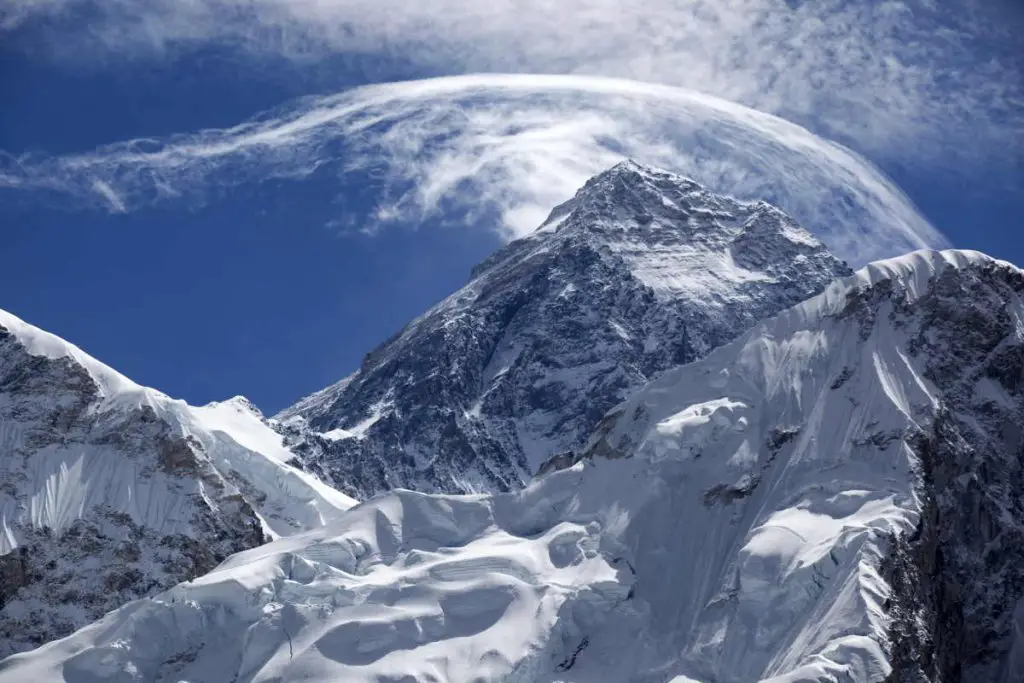Most people know that mountains are tall, rocky formations that jut up from the Earth’s surface. However, fewer people know how these behemoths are actually formed. In short, there are five main ways mountains can form:
- Seafloor spreading
- Continental collisions
- Volcanism
- Faulting and Folding
- Erosion.
Let’s take a closer look at each of these methods.
1. Seafloor spreading
Seafloor spreading happens at mid-ocean ridges where two plates are moving away from each other. As the plates move apart, the molten rock rises to the surface and cools to form a new crust. Over time, this new crust pushes outwards and forms a ridge. As the ridge gets longer, it can form a mountain range.
2. Continental collision
Continental collision happens when two land masses collide with each other. The force of the collision can cause the landmasses to crumple and fold upwards to form mountains. An example of this is the Himalayan mountain range, which was formed when India collided with Asia about 50 million years ago.
Around 50 to 60 million years ago, the Indian tectonic plate collided with Asia’s Eurasian Plate in a process called a continental collision. This collision caused extreme uplift in the region, resulting in some of the highest mountains in the world – the Himalayas. Today, these mountains are still growing by more than 1 cm per year due to ongoing tectonic activity, according to the United States Geological Survey (USGS).

3. Volcanism
Volcanism is perhaps the most well-known method of mountain formation. When molten rock (magma) and ash erupt from a volcano, they can quickly build up to form a giant mountain. The magma cools and hardens to create rock layers, while the ash falls around the volcano and is later cemented together by minerals to make a strong rock called tuff. Over time, repeated eruptions can add more and more layers to the mountain, making it taller and taller.
One well-known example of a volcanic mountain range is the Andes Mountains in South America, which were formed by the continuous eruption of volcanoes over millions of years. Volcanoes provide us with an amazing display of nature’s power while simultaneously offering clues into what lies beneath our planet’s surface.
We now know that there are three main types, shield, cinder cone, and composite, and each type presents its unique set of hazards if located near populated areas. Despite these dangers though, studying these geologic wonders continues to fascinate scientists around the world who strive to understand more about how these amazing features were created and continue to shape our planet’s landscape today!

Faulting and Folding
Mountains can also form when huge pieces of the Earth’s crust collide with each other. When this happens, the rocks on one side of the collision are pushed up and over the rocks on the other side. This process is known as faulting, and it can create massive mountains very quickly! Furthermore, as rocks are pushed upwards by the force of the collision, they often fold into all sorts of different shapes.
These folded mountains look a bit like waves frozen in time and they’re just as awe-inspiring. One of the most famous mountain ranges in North America is The Rocky Mountains formed in this way when two continental plates collided with each other about 70 million years ago.
While the Rocky Mountains are most famous for their sheer size, some mountain ranges that are formed from this process are popular for their shape. In the southern reaches of North America, there is a mountain known as Pinnacle Mountain. This mountain came out looking strikingly like a pyramid.

5. Erosion
The final way mountains can form is through erosion. Erosion happens when water, wind, ice, or even lava wears away at rocks over long periods of time. As the rocks are slowly broken down and carried away by these natural forces, anything that was once beneath them is gradually revealed.
This includes any mountains that may have been present! For example, over millions of years, water has carved out majestic canyonlands throughout North America – and some of these canyonlands even contain ancient mountain ranges that have been exposed through erosion!
In conclusion, forming mountains is an immensely slow process-it can take millions of years! However, it’s fascinating to think about how these incredible geographical features came to be. The next time you’re in front of a stunning mountain range, remember its humbling history – a history that spans eons and involves some of Earth’s most powerful geological forces.
- Moon Landings: All-Time List [1966-2025] - February 2, 2025
- What Is Max-Q and Why Is It Important During Rocket Launches? - January 16, 2025
- Top 10 Tallest Rockets Ever Launched [2025 Update] - January 16, 2025
